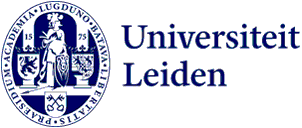
How oak seedlings teach us more on dune restoration
What is the best way to restore dune ecosystems? The project TERRA-Dunes researches the role of soil microbes in the development of natural dune areas. Recently, the project went into a new phase: planting 412 oak seedlings grown in different type of soils.
‘When restoring dune areas, the ecosystems don’t always develop as we expect,’ says Professor Ecology of Plant-Microbe-Insect Interactions Martijn Bezemer. ‘Not all anticipated species really start growing. We wanted to investigate the role of soil and certain soil organisms, such as microbes, fungi and bacteria, in growing plant communities.’

Together with the drinking water company Dunea, Leiden institutes CML and IBL started the project TERRA-Dunes in 2018. ‘Our university has a long history of research with Dunea. And they also manage and restore a lot of dunes in the Netherlands. So also for them, this research question is very relevant.’ Dunea removed an old building and parking lot in Nature Reserve Meijendel and created a sand dune as the research area.
Dead versus living soil
At the start, there was no sign of any vegetation on the dune. This also meant there were no nutrients for plants to grow, allowing the researchers to truly start from zero. ‘We took 6,000 tons of soil from nearby locations in different stages of development,’ says Bezemer. ‘Places with early grasses, more developed grassland and finally also forest. Back on the empty dune, we made 104 small research plots. They were divided into groups receiving different soil compositions.’
Soil inoculation
Soil inoculation is the deliberate introduction of specific strains of beneficial microorganisms, such as bacteria, fungi, or other microbes, into the soil to enhance its fertility and overall health. These microorganisms can form symbiotic relationships with plants or perform various functions that improve soil quality.
Half of the collected soil was sterilised prior to adding it to the plots. ‘This way we could investigate whether the development of vegetation is primarily driven by the presence of living organisms in the soil. Or if vegetation can also thrive in sterilised soil, solely because of the organic material it contains such as old leaves.’

Visible differences in soil compositions
Four years later, there was still a significant difference between the compositions of the different plots. ‘That’s a significant discovery because we have seen in other systems that you can steer the soil community, but not in these kinds of dunes yet. Some other researchers expected that after a few weeks the soil would all be quite alike, as all the plots are in the same local environment. But we could show that the type of soil you add in the beginning, does still make a difference years later.’ There were also differences between the plant communities in the plots. ‘But they didn't vary as much as the soil compositions.’
Forest soil, rich in organic matter, proved to be the most effective in promoting plant growth. ‘Organic matter helps with retaining water, for example,’ Bezemer explains. The differences between the plots with live and sterilised soil, were not that big. ‘This finding challenges preconceived notions about the popular concept of soil inoculation.’

Planting 412 oak seedlings
In the first part of the project, all plots received around forty different types of seeds. Among these seeds were trees. ‘Unfortunately, they never sprouted. That’s possibly partly because of drought in these years,’ says Bezemer.
In the fall of 2023, the research group of assistant professor Sofia Gomes added a second part to the project: planting oak seedlings. ‘Some of the plots were inoculated with mycorrhizal fungi from the beginning in 2018,’ says Gomes. ‘We wanted to measure the influence of these fungi on steering the ecosystem, especially regarding the trees. But as they never sprouted, we were unable to do so. That’s one of the reasons we planted the 412 oak seedlings.’

The best way to develop the ecosystem
Prior to planting, half of these seedlings were inoculated and grown with soil from the surrounding forest, Gomes explains. ‘That provides them with forest-associated microbes, such as ectomycorrhiza.’ The other half grew in sterilised soil. ‘We want to test whether adding forest-associated microbes improves the speed of ecosystem development.’
The second objective of the research is to compare inoculation methods. ‘Inoculating a seedling is significantly less effort than a whole plot. With this research, we want to investigate alternative ways to use microbial inoculations in nature restoration. This way, we can find out what helps the most in developing an ecosystem.’ The planting of the seedlings seems to be successful. ‘Now it’s waiting for next spring to take the first measurements.’

